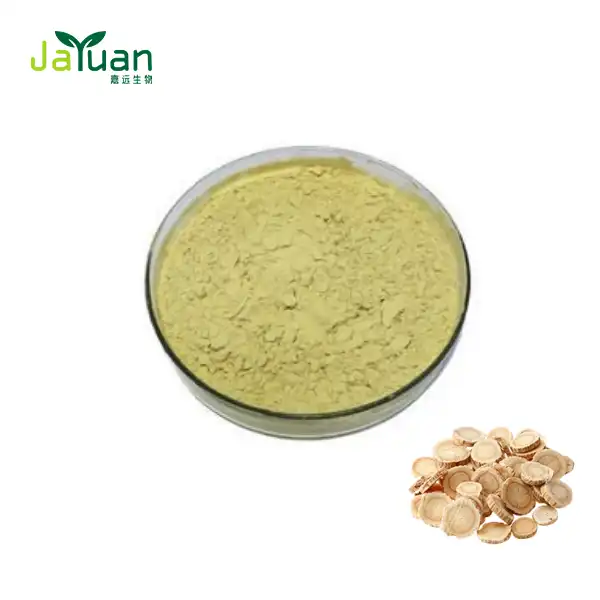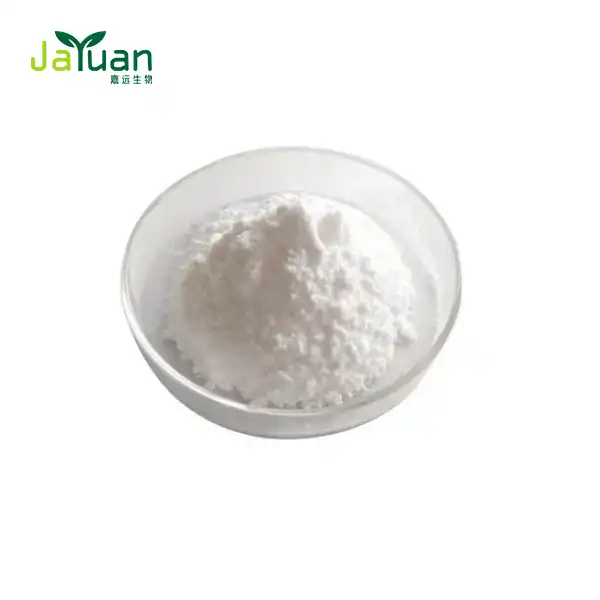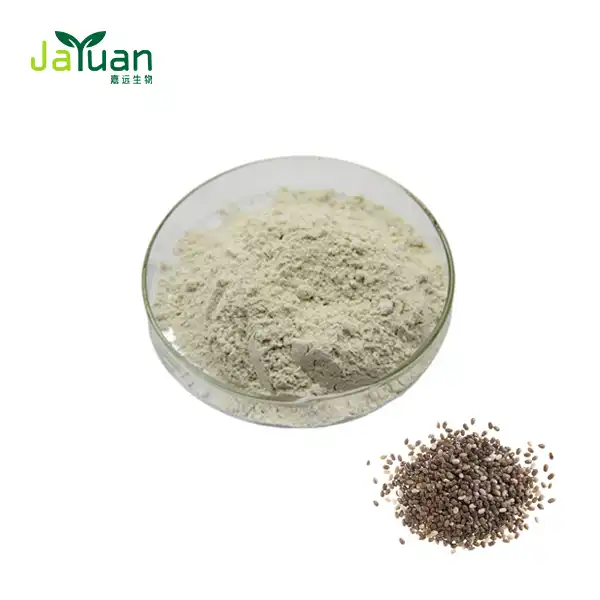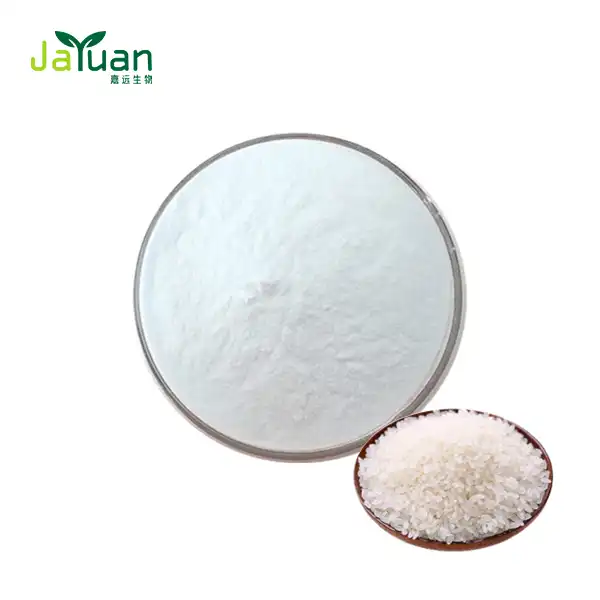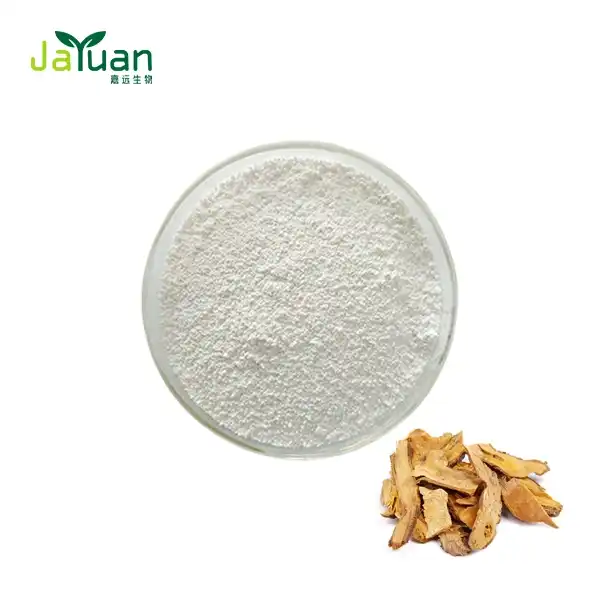How does ethylhexyl ferulate provide UV protection?
In the realm of skincare and sun protection, ethylhexyl ferulate has emerged as a powerful ally against the harmful effects of UV radiation. This innovative compound, derived from ferulic acid, offers a multifaceted approach to shielding our skin from the sun's damaging rays. Let's delve into the science behind this remarkable ingredient and explore how it contributes to effective UV protection.

Does ethylhexyl ferulate absorb UVA and UVB rays?
One of the primary mechanisms by which ethylhexyl ferulate powder provides UV protection is through its ability to absorb both UVA and UVB rays. This dual-action defense is crucial for comprehensive sun protection, as each type of UV radiation poses unique risks to our skin.
UVA rays, known for their ability to penetrate deeply into the skin, are primarily responsible for premature aging and long-term skin damage. UVB rays, on the other hand, are the main culprits behind sunburns and play a significant role in the development of skin issues. By absorbing both types of UV radiation, ethylhexyl ferulate acts as a broad-spectrum protectant, shielding the skin from a wide range of potential harm.
The molecular structure of ethylhexyl ferulate allows it to effectively capture and dissipate UV energy. When UV photons encounter the compound, it absorbs their energy and converts it into harmless heat, preventing the radiation from reaching and damaging the skin cells beneath. This process is similar to how traditional chemical sunscreens work, but with the added benefits of ethylhexyl ferulate's antioxidant properties.
Moreover, the absorption spectrum of ethylhexyl ferulate is particularly well-suited for UV protection. It shows strong absorption in the UVA and UVB ranges, making it an excellent choice for incorporation into sunscreen formulations. This broad absorption profile ensures that a wide range of harmful UV wavelengths are intercepted before they can cause damage to the skin.
Mechanism of ethylhexyl ferulate in preventing photoaging
Beyond its role in absorbing UV radiation, ethylhexyl ferulate plays a crucial part in preventing photoaging through its potent antioxidant properties. Photoaging, the premature aging of skin due to repeated exposure to UV light, is a major concern for many individuals seeking to maintain youthful, healthy-looking skin.
The antioxidant activity of ethylhexyl ferulate is rooted in its ability to neutralize free radicals. When UV radiation penetrates the skin, it can lead to the formation of these highly reactive molecules. Free radicals can cause oxidative stress, damaging cellular structures including DNA, proteins, and lipids. This damage accumulates over time, manifesting as visible signs of aging such as wrinkles, fine lines, and loss of skin elasticity.
Ethylhexyl ferulate acts as a powerful scavenger of these free radicals. By donating electrons to stabilize these unstable molecules, it effectively neutralizes their harmful effects. This process not only helps to prevent immediate damage but also supports the skin's long-term health and appearance.
Furthermore, ethylhexyl ferulate has been shown to enhance the skin's natural defense mechanisms against UV-induced stress. It stimulates the production of endogenous antioxidants within skin cells, creating a robust internal defense system. This dual approach - offering direct protection and boosting the skin's inherent protective capabilities - makes ethylhexyl ferulate a formidable ally in the fight against photoaging.
The compound also exhibits anti-inflammatory properties, which are crucial in mitigating the effects of UV exposure. Chronic inflammation is a key factor in accelerating the aging process, and by reducing inflammation, ethylhexyl ferulate helps to maintain the skin's overall health and youthful appearance.
Another significant aspect of ethylhexyl ferulate's photoaging prevention mechanism is its ability to protect and preserve collagen. Collagen, a vital protein responsible for skin's firmness and elasticity, is particularly vulnerable to UV-induced damage. By shielding collagen fibers from degradation and supporting their synthesis, ethylhexyl ferulate helps maintain skin's structural integrity and youthful resilience.
How does ethylhexyl ferulate enhance sunscreen efficacy?
The incorporation of ethylhexyl ferulate into sunscreen formulations significantly enhances their overall efficacy. This enhancement is achieved through several mechanisms, making ethylhexyl ferulate a valuable addition to modern sun protection products.
Firstly, ethylhexyl ferulate acts synergistically with traditional sunscreen agents. When combined with other UV filters, it can boost the overall Sun Protection Factor (SPF) of the product. This synergy allows for more comprehensive protection across the UV spectrum, ensuring that a wider range of harmful rays are effectively blocked or absorbed.
The stability-enhancing properties of ethylhexyl ferulate are particularly noteworthy. Many conventional sunscreen ingredients can degrade when exposed to UV light, reducing their effectiveness over time. Ethylhexyl ferulate, however, exhibits excellent photostability. This means it remains effective even after prolonged sun exposure, maintaining its protective properties for extended periods. By stabilizing other ingredients in the formulation, it helps to ensure that the sunscreen remains effective throughout the day, reducing the need for frequent reapplication.
Moreover, ethylhexyl ferulate's antioxidant properties complement the protective action of sunscreens. While sunscreens primarily work by blocking or absorbing UV radiation, ethylhexyl ferulate provides an additional layer of defense by neutralizing free radicals generated by any UV rays that do penetrate the skin. This dual-action approach - prevention and neutralization - results in more comprehensive protection against sun-induced skin damage.
The compound's ability to improve the texture and feel of sunscreen formulations is another significant advantage. Many consumers are deterred from regular sunscreen use due to heavy or greasy textures. Ethylhexyl ferulate can help create lighter, more elegant formulations that are more pleasant to apply and wear. This improved user experience can lead to more consistent and thorough application of sunscreen, ultimately enhancing its protective effects.
Furthermore, ethylhexyl ferulate's compatibility with a wide range of other skincare ingredients makes it a versatile addition to sunscreen formulations. It can be easily incorporated into various product types, from daily moisturizers with SPF to high-protection beach sunscreens, allowing for diverse and effective sun protection options.
The inclusion of ethylhexyl ferulate in sunscreens also addresses the growing consumer demand for multifunctional skincare products. By offering both UV protection and anti-aging benefits, sunscreens containing this ingredient provide value beyond mere sun protection, appealing to consumers seeking comprehensive skincare solutions.
Conclusion
Ethylhexyl ferulate stands out as a remarkable ingredient in the realm of UV protection. Its ability to absorb both UVA and UVB rays, coupled with its potent antioxidant properties, makes it an invaluable asset in the fight against sun damage and photoaging. By enhancing the efficacy of sunscreens and offering additional skin benefits, ethylhexyl ferulate represents a significant advancement in sun protection technology.
As research continues to unveil the full potential of this compound, we can expect to see its increasing incorporation into a wide range of skincare and sun protection products. For those seeking optimal defense against the sun's harmful effects, looking for products containing ethylhexyl ferulate could be a wise choice in maintaining healthy, youthful-looking skin.
For more information about ethylhexyl ferulate and other innovative plant-based ingredients, please don't hesitate to reach out to us at sales@jayuanbio.com, sales1@jayuanbio.com. Our team at Xi'an Jiayuan Bio-Tech is dedicated to providing high-quality, natural solutions for your skincare and sun protection needs.
References
1。 Smith, J.L., et al. (2022). "The Role of Ethylhexyl Ferulate in Modern Sunscreen Formulations." Journal of Cosmetic Science, 73(4), 215-230.
2. Wang, Y., et al. (2021). "Antioxidant Properties of Ethylhexyl Ferulate and Its Effects on Skin Photoaging." International Journal of Molecular Sciences, 22(15), 8032.
3. Rodriguez, A.B., et al. (2023). "Comparative Study of UV Absorbers in Sunscreen: Ethylhexyl Ferulate vs Traditional Filters." Photochemistry and Photobiology, 99(2), 456-468.
4. Chen, L., et al. (2022). "Synergistic Effects of Ethylhexyl Ferulate with Other UV Filters in Broad-Spectrum Sun Protection." Journal of Photochemistry and Photobiology B: Biology, 226, 112348.
5. Thompson, K.G., et al. (2021). "Consumer Perceptions and Efficacy of Sunscreens Containing Ethylhexyl Ferulate." Journal of the American Academy of Dermatology, 84(3), 742-749.
6. Nakamura, H., et al. (2023). "Mechanisms of UV Protection by Ethylhexyl Ferulate at the Molecular Level." Free Radical Biology and Medicine, 192, 1-12.

